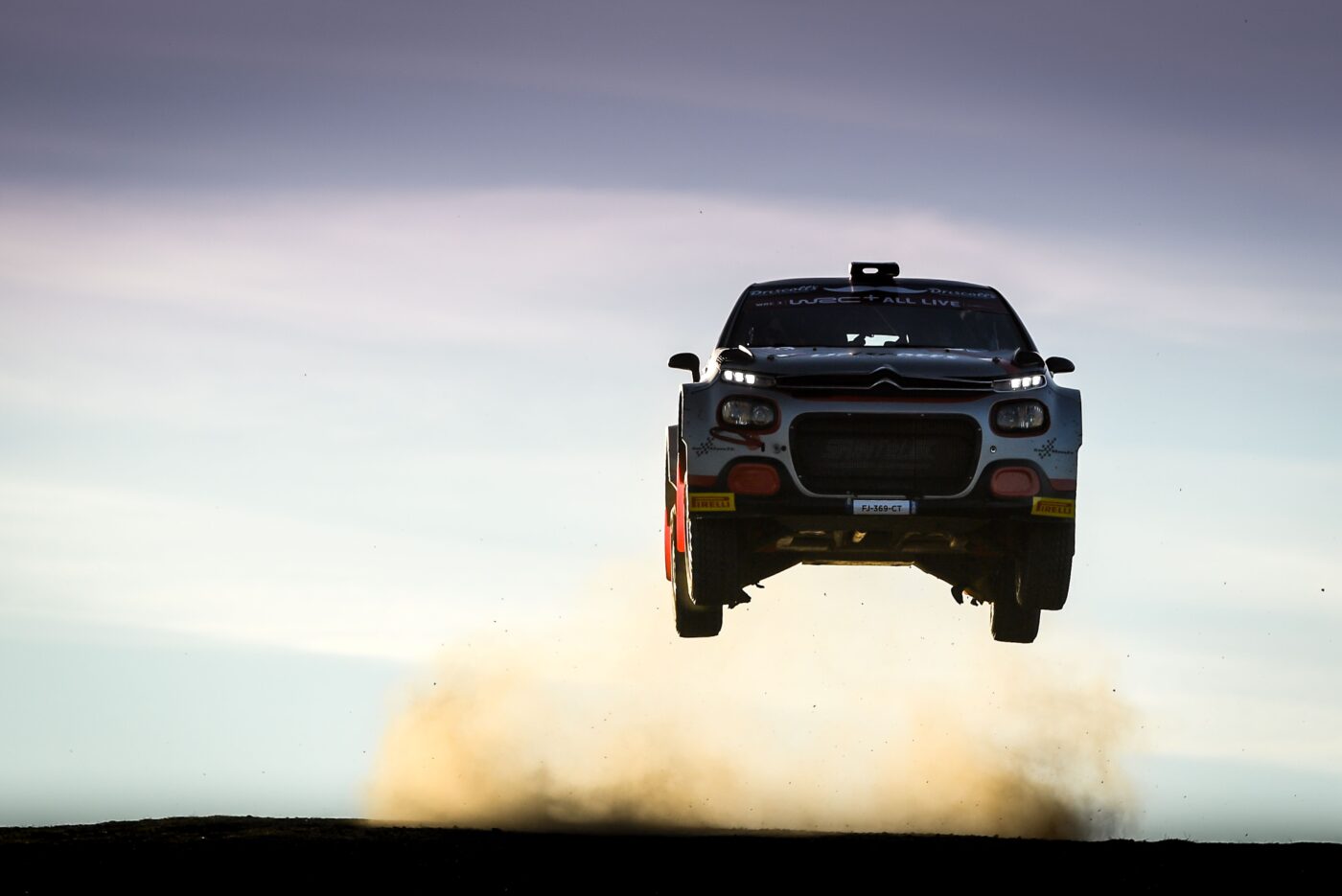The World Rally Championship is a high octane test of man and machine on snow, ice, gravel and asphalt which tests its crews to the maximum.
One of the key areas where rallying differs from circuit racing is that there’s two people in the car, and over the last 10-15 years, technology has helped revolutionise how co-drivers and drivers work together to attack a rally stage with little more than a car and a book of instructions on where to drive.
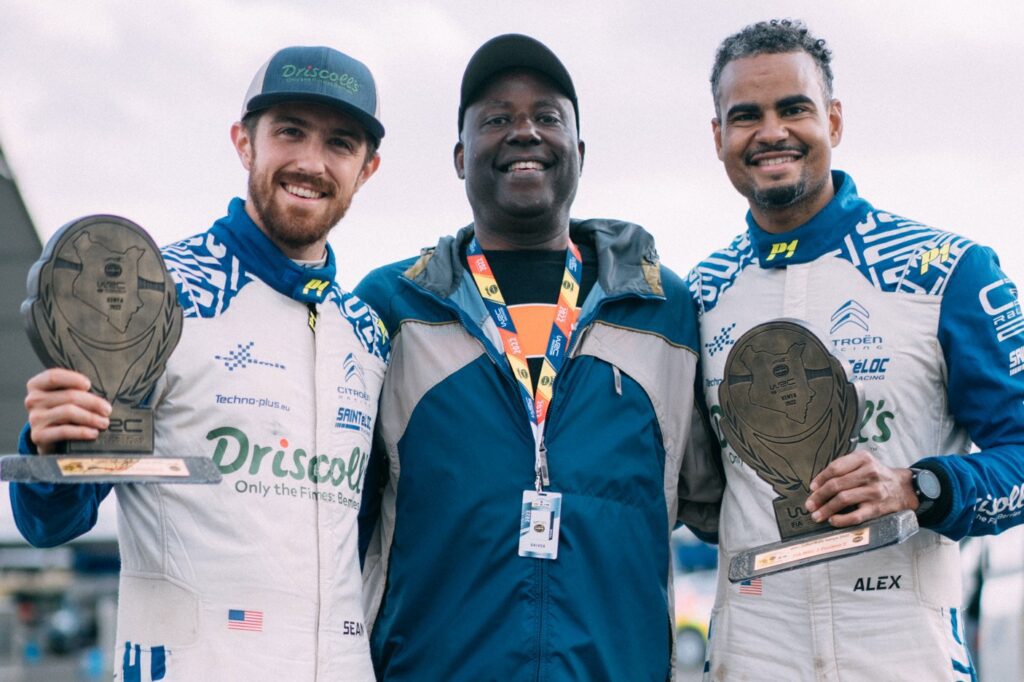
Alex Kihurani competes in the WRC2 class with fellow American driver Sean Johnston in a Citroen C3 Rally 2-spec car. Kihurani’s mind was opened to rallying by his motorsport-mad father Gakuu and a set of rally VHS videos.
Just over 10 years ago he moved to the UK to chase his rally co-driver dream, and today he takes you inside his race weekend essentials bag to shine a light on the complicated and fascinating world as a rally co-driver.
Every rally starts with preparation and perhaps the key element of that preparation is the reconnaissance run (known as a recce, pronounced reck-ee).
A rally itself is a series of timed stages – from point a to point b – but these stages change on rallies each year. So before the event, drivers and co-drivers are allowed to drive at a slower speed through the stages, to make a series of instructions for the driver that the co-driver will read out in the rally proper.
These are called pacenotes. So the first item in any co-driver’s bag is not going to be so technologically advanced. It’s pen and paper!
“As a navigator, we have quite a unique set of accessories for every rally weekend,” Kihurani says.
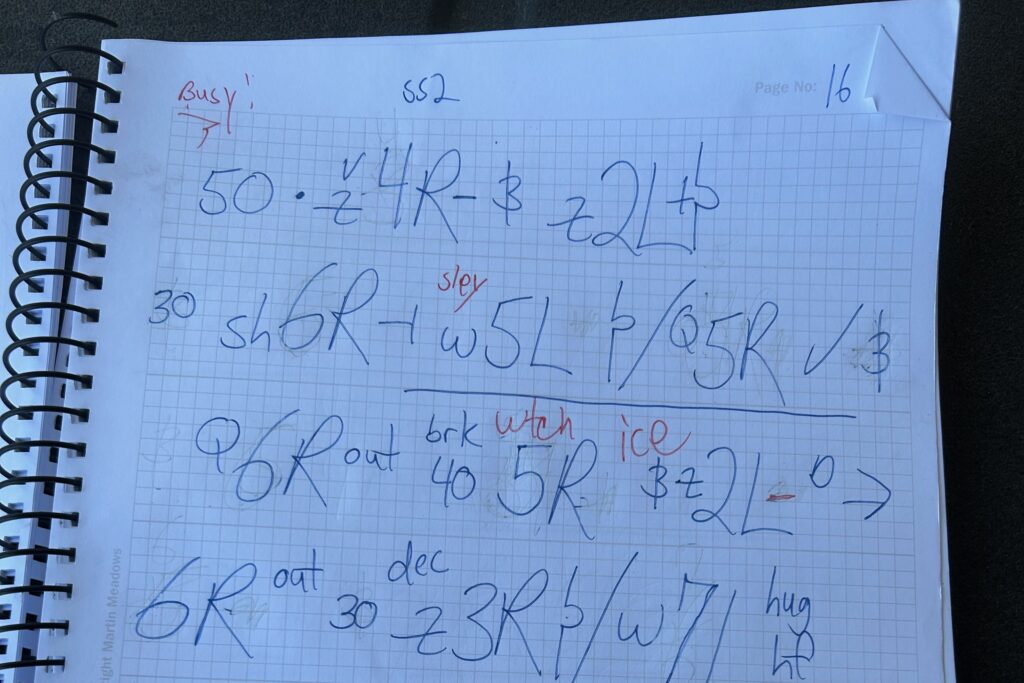
“I always have my Pacenote.com co-driver bag along with my A4 pacenote books, blue and red Flexion pilot erasable pens with plenty of refills, earplugs, AirPods, portable charger, and my Ikea Byllan laptop cushion for writing notes in a bumpy recce car.”
Each driver and co-driver crew can use whatever system they like for their pacenotes, but they have to be read out while navigating stages sometimes not far shy of 30 miles, and at speeds comfortably over 100mph. There’s little room for error.
The more complicated you make the notes, the faster you may be able to go, but there’s a higher liklihood of the driver becoming overwhelmed with information and going slower or worse; crashing.
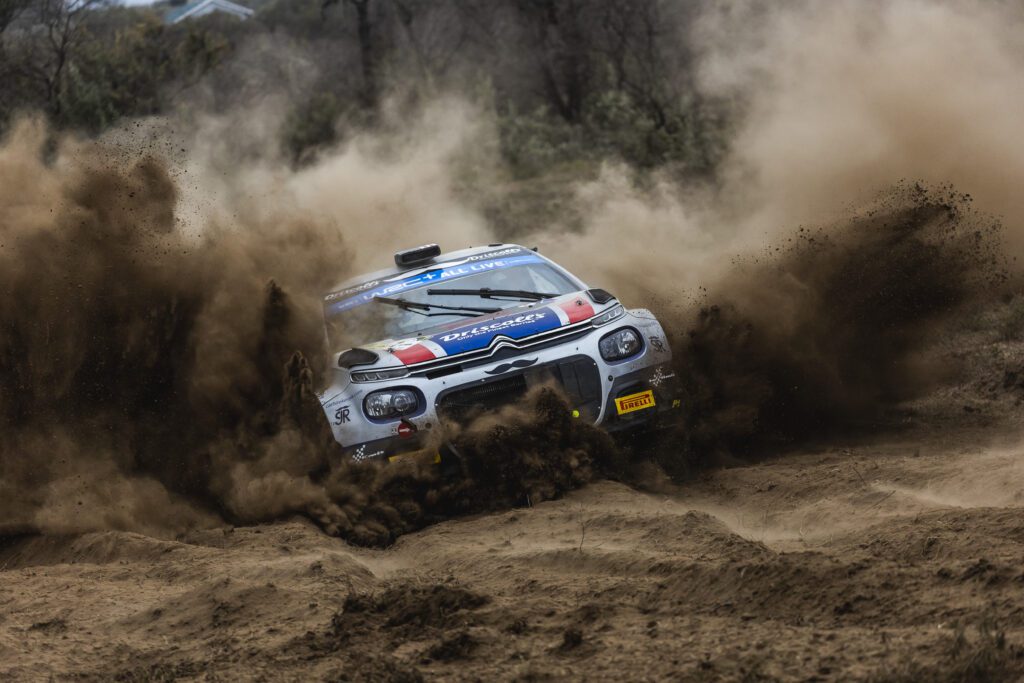
Most crews use a system of numbers like 1-10, with 10 being the fastest corner and 1 being the slowest/tightest corner. So one-right into 10-left for example would be a slow right corner into a fast left corner.
The trick is, these instructions need to be accurate at speed, and when all the crew has to go on is pacenotes that represent a series of calculated guesses at what speed a corner should be taken at, it’s a challenge! Have a listen in on Kihurani on the rally stage below and the challenge becomes apparent.
It also means that the co-driver rarely looks up from his book. So it can be a really sickness-inducing experience for people not used to it, travelling at over a 100mph on a loose, slippy surface, and not being able to look up, knowing which way the car may go next. The professionals reading the notes know what corner is coming from what’s on the paper and don’t need to look up, though.
Another task of the co-driver is to keep time. They have to fill in various timings in a book provided by the organisers, and between the a-to-b stages that are completed at speed, the crews only have an allowed period of time to navigate between the end of the stage and the start of the next one.
So where something like Formula 1 would race from point a to point b on a circuit, rally drivers have to navigate between the last stage and the next stage on public roads, too. And they can’t be early or late, but within an allotted window. Penalties for this can ruin a rally instantly and undo the close competition fought out on the stages.
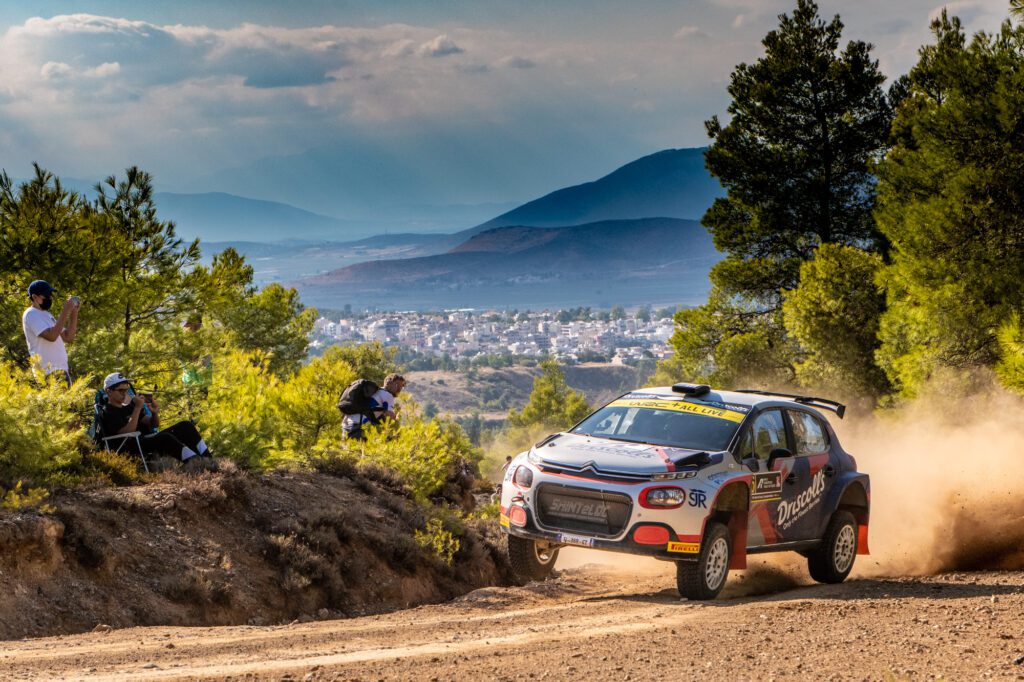
It also means driving in a really noisy rally car between stages, which makes a noise cancelling headset really important to avoid the experience becoming loud and nauseous.
Under those conditions, keeping note of various times and calculating when things need to be done can be an extremely difficult and unpleasant experience, even if pros like Kihurani make it look easy.
“I wear two watches!” says Kihurani, and this is standard practice in the WRC.
“On my left wrist, I use a Garmin Forerunner, and on my right wrist I use the Fastime RW3 Copilote watch, which is pretty much the only game in town for co-drivers.
“For the Copilote watch, the functionality is quite simple, but it makes a world of difference as a co-driver.
“The watch allows you to set timers for various road sections and to link time controls throughout a rally. The watch will then count down for you to check-in time, which helps you avoid being early or late at a time control.
“It sounds negligible, but in rallying, being one minute early at a time control is a one minute penalty (and one minute late is a 10-second penalty), so a small timing mistake or lapse in concentration during check-in can ruin your entire weekend of rallying.
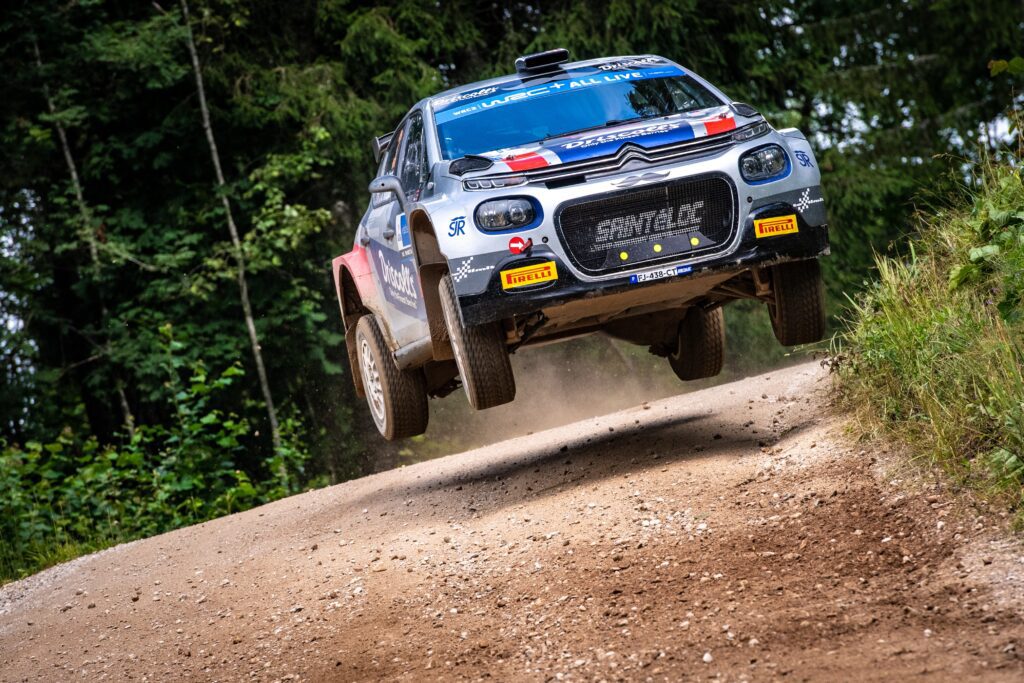
“I use my Garmin watch simultaneously as a backup watch, a backup odometer, and to double-check my timing on road sections. It also has the added plus of tracking my heart rate/vitals throughout the day.
“If Garmin is listening, a rally app for the watch would be an amazing thing to have!”
Camera technology has become another area that has revolutionised the WRC. Where cameras in recce cars have been a fixture for a long time, now that go-pros are installed in rally cars, the footage can be downloaded to a smart device and the driver and co-driver can re watch a rally stage they have just completed, mere seconds later.
This means that, if there were mistakes in the pacenotes or there are areas they could have gone faster, they can make a change ready for when that stage is run again later in the day, or for next year if part of that stage ends up being used again.
“I always pack the iPad and a few extra spare batteries for the in-car GoPro,” adds Kihurani.
“In WRC events, we typically run each stage twice, so I always want to download the onboard onto our iPad in-between passes so we can review our run and adjust notes for the second pass.”
Another thing rally crews have to do is make repairs and be responsible for the car, because you might be out on the stages and in the wilderness far away from your mechanics all day.
The teams are responsible for sorting any tools that need to be kept in the car, but one area Kihurani and Johnston have to look after through the day is tyre pressures as they are key to performance.
That’s most of the rally-specific items out of the way, so it’s time to learn a bit more about Kihurani and what else is in his rally bag of tricks…
What can’t you live without?
“A decent cup of coffee!
“Also, ear plugs, in case you end up near a noisy road or manage to book accommodation a bit too close to the service park which is usually noisy 24 hours. The days are so long that sleep is at a premium.”
Do you bring anything superstitious?
“I tend to live by the superstition that, if you bring it, you won’t need it, so I tend to bring a lot of small spares that only get used occasionally.”
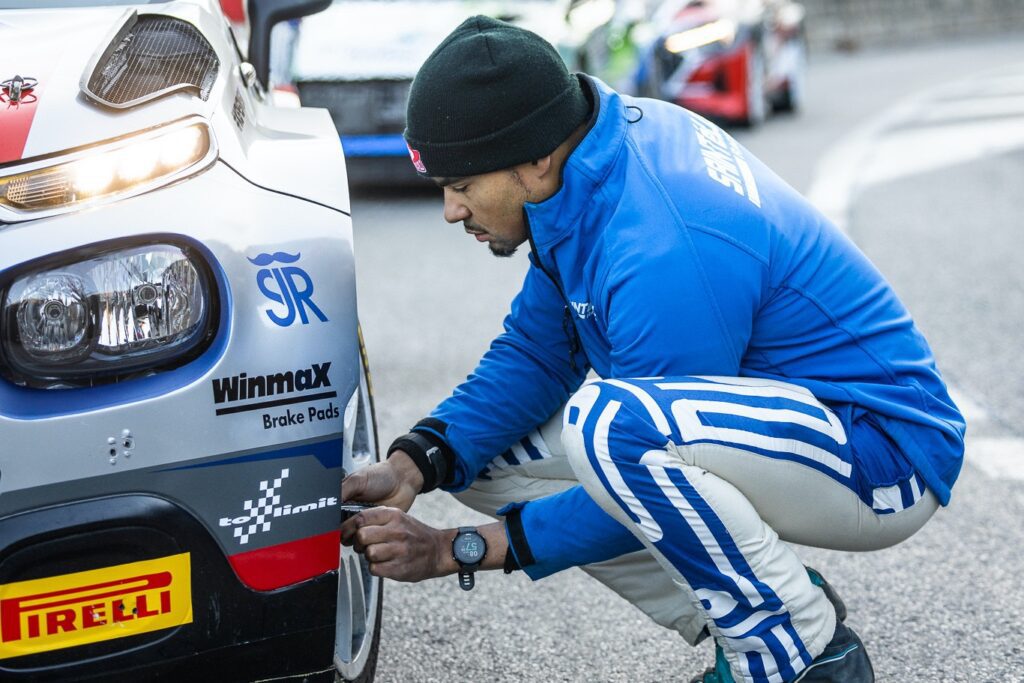
What backpack do you use?
“Just my messenger-style co-driver bag. The WRC organisers often give event backpacks to handover all the roadbooks, documentation, etc. so I keep a collection of them, particularly my cherished Rallye Monte-Carlo backpacks, which is one of if not the most prestigious event on the calendar.”
Do you pack any fitness gear?
“Just some running trainers and a massage ball. Usually we don’t have any spare time with recce and rally days being so long, and all the video work we need to do on the pacenotes in-between.”
Do you have any essentials for fitness, nutrition and recovery?
“Co-driving is an intensely mental task, so most of what I bring is to aid in my mental performance.
“I typically use MindLabPro as a daily brain supplement/nootropic in the morning, and some ashwagandha in the evenings to help with hormones, stress, and sleep. On the more absurd end, I bring a frother and Kiss My Keto MCT oil for my morning coffee.
Are sunglasses important and do you carry those?
“My sunglasses game is pretty weak, but generally I’ll use anything where the temple is thin enough to keep the headphone seal in my transit headset, else it’s a painfully noisy road section. We use a Stilo intercom and headset in the car.”
What about personal care?
“No time for that during rallies!”
What Helmet, overalls and gloves do you use?
Stilo carbon helmet, P1 racing suit. No gloves for co-drivers as we need to turn pacenote pages. I also wear blue OMP Tecnica shoes.
Do you pack anything that is more for Sean, something to assist your driver in their duties?
“If I was a more considerate co-driver, I’d also carry extra chapstick because Sean is always panicking about losing his.”
